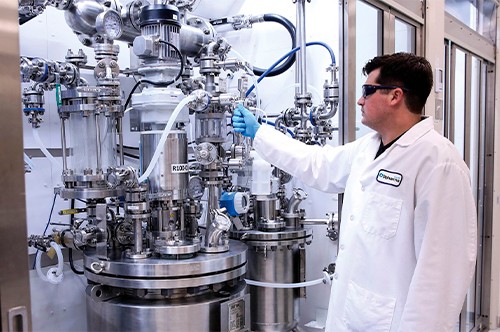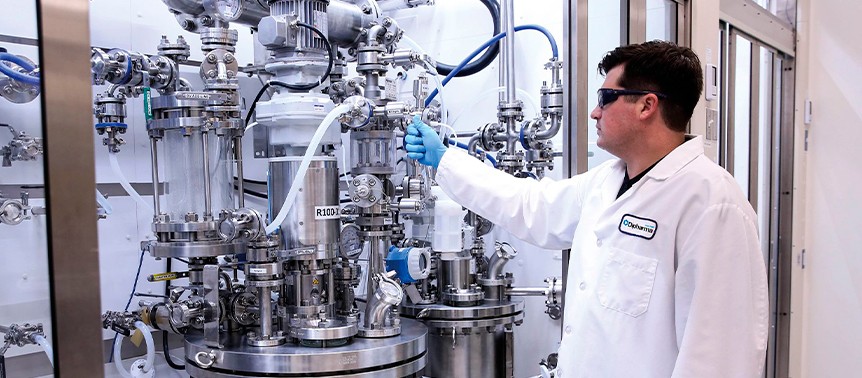USA Life Sciences: Tools and Materials Providers – Growth through innovation


Image courtesy of Di`pharma
For the companies providing the essential tools and materials that power discovery, development, and manufacturing, 2025 is shaping up to be a year defined by strategic transformation and a laser focus on delivering next-generation solutions. As the market recovers and evolves, leading providers are differentiating themselves not just through scale, but through their commitment to innovation across portfolios, processes and partnerships. The overall life science tools market, estimated at well over US$100 billion globally, continues to benefit from strong secular trends, with analysts anticipating long-term market growth in the 4-6% range.
The productivity imperative: Efficiency through innovation
The pressure on laboratories across pharmaceutical, biotech and diagnostic sectors to enhance efficiency has never been greater. Factors including rising R&D complexity, the need for faster turnaround times in QA/QC, persistent labor shortages, and the sheer volume of data generated necessitate smarter, faster and more automated solutions. As Agilent CEO Padraig McDonnell noted at JPM: “As I go around the world talking to laboratories, the thing that is really top of mind for scientists is productivity.”
Agilent Technologies is tackling this head-on through its Ignite Transformation, focusing explicitly on enhancing lab productivity. “We are seeing strong adoption of our new LC platform, Infinity III, which boosts lab productivity by 10–20%. We are also collaborating with ABB Robotics to build automated lab solutions. We are shifting our R&D strategy—aggregating product lines and making asymmetric investments in the highest-growth areas,” McDonnell reiterated in his interview with GBR.
Riding the wave of novel modalities
The therapeutic landscape is undergoing a profound shift. While small molecules remain important, the pipeline is increasingly dominated by complex biologics, including cell and gene therapies (CGT), antibody-drug conjugates (ADCs), mRNA vaccines and therapeutics, and advanced peptides like GLP-1s. Markets for novel modalities are expanding rapidly; for instance, the ADC market is valued at approximately US$12-16 billion in 2025 with projected CAGRs exceeding 10%, while the CGT market is forecast to grow even faster, with some estimates projecting CAGRs above 18%. The rise of proteomics promises deeper biological insights. These novel modalities present unique challenges and opportunities, requiring specialized tools, reagents, delivery systems, and manufacturing expertise far beyond those needed for traditional drugs. The high therapeutic potential and market opportunity are driving intense investment and innovation in enabling technologies.
MilliporeSigma, the US life science business of Merck KGaA, is heavily investing in capabilities to support the development and manufacturing of novel modalities, particularly ADCs and CGT. A significant US$76 million expansion in ADC manufacturing capacity, coupled with the launch of the innovative Mobius® ADC Reactor – the first single-use reactor specifically for ADC production – demonstrates their leadership. “The company’s goal is to ensure clients can bring their innovations to market more effectively and with shorter turnaround times. This investment is designed to triple our existing manufacturing capacity to meet the increased global client demand for ADCs,” reinforced Benjamin Hein, head of life science services.
The Mobius® reactor itself is an innovation, eliminating potent liquid waste and improving efficiency compared to traditional methods.
Beyond ADCs, the acquisition of Mirus Bio strengthens MilliporeSigma’s position in viral vector manufacturing, crucial for CGT, by adding expertise in transfection reagents like TransIT-VirusGEN®. Innovation permeates their services as well, with platforms like AptegraTM reducing genetic stability testing time by 66%, and the Blazar® platform enabling rapid virus detection. As Sebastián Arana, head of process solutions, stated: “MilliporeSigma is focused on advancing its position in high-growth areas by strengthening offerings across the molecule and modality journey from discovery to commercial manufacturing. Strategic investments, such as the recent acquisition of Mirus Bio for transfection reagents and the expansion of ADC and HP-API capabilities, support the company’s ambition to lead in novel modalities including viral vectors, ADCs, and mRNA.”
The rise of the integrated provider
A growing number of leading life science tools and materials companies are strategically expanding into CDMO services. This trend is driven by several factors: the desire to capture greater value across the drug lifecycle, the opportunity to leverage deep technical expertise and existing customer relationships (particularly with emerging biotechs needing integrated support), the increasing manufacturing complexity of novel modalities requiring specialized capabilities, and the appeal of adding high value, often recurring, service revenue streams.
The contract manufacturing landscape is as dynamic and demanding as ever, which Marc Caspar, CEO of Thermo Fisher Scientific noted at JPM: “Catalent has been acquired by Novo Nordisk. From our lens, as the market leader in sterile fill-finish, it takes an option off the table. Biosecure, whether passed or not passed, I do not think the dialogue is going to end. That is leading to a shift in focus to more of the work moving to Western-based facilities.”
Agilent Technologies exemplifies a targeted CDMO strategy, particularly through its US$1 billion acquisition of BIOVECTRA in July 2024. This move expands its CDMO capabilities into specialized areas like microbial fermentation, peptide precursors, ADCs, and sterile fill-finish, complementing its leading position in oligonucleotide manufacturing. “We are not aiming to be a generalist CDMO. We are building a specialized, high-capability business in strategic swim lanes.”
As the industry moves beyond recent volatility, the commitment to innovation positions these providers not just to capitalize on market recovery but to actively drive the next wave of scientific discovery and therapeutic breakthroughs.

Image courtesy of Di`pharma
For the companies providing the essential tools and materials that power discovery, development, and manufacturing, 2025 is shaping up to be a year defined by strategic transformation and a laser focus on delivering next-generation solutions. As the market recovers and evolves, leading providers are differentiating themselves not just through scale, but through their commitment to innovation across portfolios, processes and partnerships. The overall life science tools market, estimated at well over US$100 billion globally, continues to benefit from strong secular trends, with analysts anticipating long-term market growth in the 4-6% range.
The productivity imperative: Efficiency through innovation
The pressure on laboratories across pharmaceutical, biotech and diagnostic sectors to enhance efficiency has never been greater. Factors including rising R&D complexity, the need for faster turnaround times in QA/QC, persistent labor shortages, and the sheer volume of data generated necessitate smarter, faster and more automated solutions. As Agilent CEO Padraig McDonnell noted at JPM: “As I go around the world talking to laboratories, the thing that is really top of mind for scientists is productivity.”
Agilent Technologies is tackling this head-on through its Ignite Transformation, focusing explicitly on enhancing lab productivity. “We are seeing strong adoption of our new LC platform, Infinity III, which boosts lab productivity by 10–20%. We are also collaborating with ABB Robotics to build automated lab solutions. We are shifting our R&D strategy—aggregating product lines and making asymmetric investments in the highest-growth areas,” McDonnell reiterated in his interview with GBR.
Riding the wave of novel modalities
The therapeutic landscape is undergoing a profound shift. While small molecules remain important, the pipeline is increasingly dominated by complex biologics, including cell and gene therapies (CGT), antibody-drug conjugates (ADCs), mRNA vaccines and therapeutics, and advanced peptides like GLP-1s. Markets for novel modalities are expanding rapidly; for instance, the ADC market is valued at approximately US$12-16 billion in 2025 with projected CAGRs exceeding 10%, while the CGT market is forecast to grow even faster, with some estimates projecting CAGRs above 18%. The rise of proteomics promises deeper biological insights. These novel modalities present unique challenges and opportunities, requiring specialized tools, reagents, delivery systems, and manufacturing expertise far beyond those needed for traditional drugs. The high therapeutic potential and market opportunity are driving intense investment and innovation in enabling technologies.
MilliporeSigma, the US life science business of Merck KGaA, is heavily investing in capabilities to support the development and manufacturing of novel modalities, particularly ADCs and CGT. A significant US$76 million expansion in ADC manufacturing capacity, coupled with the launch of the innovative Mobius® ADC Reactor – the first single-use reactor specifically for ADC production – demonstrates their leadership. “The company’s goal is to ensure clients can bring their innovations to market more effectively and with shorter turnaround times. This investment is designed to triple our existing manufacturing capacity to meet the increased global client demand for ADCs,” reinforced Benjamin Hein, head of life science services.
The Mobius® reactor itself is an innovation, eliminating potent liquid waste and improving efficiency compared to traditional methods.
Beyond ADCs, the acquisition of Mirus Bio strengthens MilliporeSigma’s position in viral vector manufacturing, crucial for CGT, by adding expertise in transfection reagents like TransIT-VirusGEN®. Innovation permeates their services as well, with platforms like AptegraTM reducing genetic stability testing time by 66%, and the Blazar® platform enabling rapid virus detection. As Sebastián Arana, head of process solutions, stated: “MilliporeSigma is focused on advancing its position in high-growth areas by strengthening offerings across the molecule and modality journey from discovery to commercial manufacturing. Strategic investments, such as the recent acquisition of Mirus Bio for transfection reagents and the expansion of ADC and HP-API capabilities, support the company’s ambition to lead in novel modalities including viral vectors, ADCs, and mRNA.”
The rise of the integrated provider
A growing number of leading life science tools and materials companies are strategically expanding into CDMO services. This trend is driven by several factors: the desire to capture greater value across the drug lifecycle, the opportunity to leverage deep technical expertise and existing customer relationships (particularly with emerging biotechs needing integrated support), the increasing manufacturing complexity of novel modalities requiring specialized capabilities, and the appeal of adding high value, often recurring, service revenue streams.
The contract manufacturing landscape is as dynamic and demanding as ever, which Marc Caspar, CEO of Thermo Fisher Scientific noted at JPM: “Catalent has been acquired by Novo Nordisk. From our lens, as the market leader in sterile fill-finish, it takes an option off the table. Biosecure, whether passed or not passed, I do not think the dialogue is going to end. That is leading to a shift in focus to more of the work moving to Western-based facilities.”
Agilent Technologies exemplifies a targeted CDMO strategy, particularly through its US$1 billion acquisition of BIOVECTRA in July 2024. This move expands its CDMO capabilities into specialized areas like microbial fermentation, peptide precursors, ADCs, and sterile fill-finish, complementing its leading position in oligonucleotide manufacturing. “We are not aiming to be a generalist CDMO. We are building a specialized, high-capability business in strategic swim lanes.”
As the industry moves beyond recent volatility, the commitment to innovation positions these providers not just to capitalize on market recovery but to actively drive the next wave of scientific discovery and therapeutic breakthroughs.